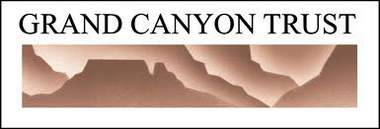I’ve been a devoted reader of the ‘Letters to the Editor’ page in the weekly Moab Times-Independent for almost 40 years. Some of my fondest Moab memories are sitting in publisher Sam Taylor’s office on countless occasions, discussing the issues of the day. Sam and I didn’t always see eye-to-eye, but there was a mutual respect and affection that trumped differences of opinion. I miss Sam, though I appreciate the fact that Lisa Church has maintained that same open door policy. We’ve had some good chats too.
I remember once, after I’d been a Moab ‘local’ for all of a few years, I fired off a letter to the editor, offering my invaluable views on what was wrong with my new hometown and how to fix it. Sam devoted a few paragraphs of his “Community Comments” to gently knock the stuffing out of me. I deserved it.
Before I was able to vent my frustrations in The Zephyr, I was a semi-regular letter writer to the T-I myself; I followed and preceded a number of ‘repeat offenders’ from Grand County, who often submit rants to the paper. It’s a tradition.
We came to recognize that these opinions were a Voice on behalf of some particular point of view. Going all the way back to the 1970s, I recall the fiery rhetoric of Maggie Stryker, who had little or no use for us ‘newcomers.’ Or Joe and Jerry Stocks, who engaged my old ranger pal Mike Salamacha and me in what amounted to a long-running argument in the T-I. Sam finally called a halt, suggesting we all bury the hatchet, at least for a while, and maybe share a hamburger together. Who knows, he suggested…you might even like each other. We did, and again, Sam was right.
There have been many more letter writers over the decades, some representing the ‘Old Moab’ point of view and others who defend the ‘New Moab’ perspective.
I’ve noticed a relative newcomer to the discussion, who has fast become one of the Regulars herself—Darcey Brown often expresses opinions on the pages of the T-I, and it’s clear to see that her loyalties reside with the tourist/amenities based economy; she hasn’t much use for the history of Grand County before she arrived.
But sometimes Ms. Brown just doesn’t get all her facts right. As Moab’s population becomes more and more polarized, the arguments from both sides need to be grounded in facts and hard information.

A few weeks ago, Ms. Brown took note of the recent verbal battles that have been waged between opposing forces and took issue with another regular contributor, Dave Cozzens. She referred to a recent meeting, “full of angry citizens who were rude to Grand County Council members.” She continued, “Their anger seemed to be fueled by the intentional spread of false claims. For example, Dave Cozzens, writing about the ‘billion-dollar industry of environmental lobbying,’ seems to have mixed up his ‘b’s and his ‘m’s, and even that would be a gross exaggeration.”
But in terms of Big Green’s influence and power, Cozzens is essentially right. The financials of all these non-profit organizations are available to the public and the numbers are staggering. Consider these facts for just four of the country’s largest environmental groups, taken directly from the Form 990s they are required to file with the IRS:
National Resource Defense Council: In 2012 its net assets were $209,173,306. Its highest salaried employee earned $435,000. Thirteen more staffers earned more than $200,000 annually.
Environmental Defense Fund: Net assets in 2012 were $186,701,339. Its highest paid staffer earned $540,000. “Compensation of current officers, directors, trustees and key employees” totaled $1,235,525
Sierra Club: Its net assets in 2013 were $85,855,136…Its highest salaried staffer earned $187,000 including benefits.
The Wilderness Society: Net assets in 2013 reached $48,868,561 with a payroll of $14 million.

The Nature Conservancy boasts assets of $5,762,300,943–that’s BILLION– and includes a payroll of $309,858,258. Its top salaried officer makes $618,000. Some may argue that it’s not an environmental “lobbying” group, but with financial ties to some of the nation’s biggest companies, and TNC’s “Corporate Engagement strategy,” it seems fair to add them to the mix. Their corporate partners include: Bank of America, BP America, Inc., Chevron Corporation, The Dow Chemical Company, Duke Energy, Monsanto, Plum Creek Timber Company, Inc., and Royal Dutch Shell.
Ms. Brown may argue that the actual lobbying expenditures associated with these numbers are smaller and I would agree. But it would be disingenuous to suggest that the mainstream environmental industry, with its stunning ties to ‘Big Business’—corporations, venture capitalists, banks and the 1%—is some kind of national network of dedicated volunteers. It IS ‘Big Business.’ Trying to isolate lobbying costs from their total assets is like examining the national defense budget, but only including the cost of boots-on-the-ground combat soldiers. I doubt you’d find any good progressive making that kind of selective observation.
Brown also comes to the defense of local environmental organizations. In another letter she wrote: “There appears to be an organized campaign to refer to environmental organizations as ‘powerful, special interest groups.’ If the intention weren’t so misleading and dishonest, it would be laughable.” And she paid tribute to, “the half-dozen nonprofit environmental organizations in Moab that are staffed out of the home of a single staffer working time-and-a-half for poverty wages and totally reliant on volunteers to accomplish their mission.”
While there may be a few grassroots groups who work from homes bought before the amenities economy drove prices through the roof (and beyond), the dominant green grassroots organizations hardly resemble Ms. Brown’s colorful description.
The two most vocal and representative grassroots groups in Moab are the Southern Utah Wilderness Alliance (SUWA) and the Grand Canyon Trust (GCT). Here are their Form 990 financials, from the most recently filed years:

SUWA: In 2013 it showed net assets of $6,691,717 with a payroll of $1.6 million. Its executive director earns $111,000 in salary and “other compensation.”
Grand Canyon Trust: Its 2013 assets were $15,160,453 and a $2,468,257 payroll. The Trust’s executive director took home $193,313 and $13,935 in “other compensation,” totaling $207,248.


Both of the executive directors reside in Grand County and I think most locals struggling to survive in this insane “amenities economy” would be grateful to receive “poverty wages” like these.
It might be difficult for Darcey Brown to understand or relate to what poverty is all about. She may be unable to grasp what it means to live on the margins. Ms. Brown, after all, comes from one of the most iconic families in Aspen, Colorado. According to the Aspen Times, her father, D.R.C. Brown was “a giant in the history of the Aspen and Colorado ski industries.” The Times reported that “He played a pivotal role in transforming a sputtering Aspen Skiing Corp. into a national powerhouse during the 1960s and ’70s. He served on the first board of directors after industrialist Walter Paepcke formed the company. Brown later guided the company through its most prosperous period of growth as president and general manager for 22 years.” The Browns helped transform an old mining town into what it is now— Aspen is truly the first “New West” city. It’s now the place where the “billionaires chase the millionaires out of the valley,” simply because being a millionaire in Aspen is not remotely enough to survive the extraordinary cost of living there. Today, Darcey Brown manages a non-profit foundation herself, with assets of $4,998,884. She distributes those funds to organizations she deems worthy.
I’m sure Darcey Brown means well and is trying to express what she thinks is best for Moab, based on her own history and experience. But very few of us share that kind of past and sometimes it can be difficult to endure the “advice” of someone who really doesn’t understand the history of a place that she’s now chosen to call home—or even worse, doesn’t care about its history before her arrival. I made the same mistake myself, so many years ago.
Years ago, when Moab was on its way to becoming what it is today. I could not bear to watch the changes. I got disillusioned, packed up, sold my house for a good profit, and found a quieter, more peaceful place to call home.But the older Moab families, with roots going back decades and a century or more, were braver than me. They have not been as easy to displace.
I know there have been some angry and emotional responses to Ms. Brown’s frequent observations and some of them were inappropriate. But just once, try standing in the shoes of these Moab families–of “Old Moab”–the folks who have called this place home for over a century, who survived the worst hard times, who really lived on poverty wages, and who still love Moab, despite all the hardships. It has to be heartbreaking to be told your opinions no longer count and that your time there has come and gone.
NOTE: An earlier version of this story stated that the Browns had “created the Aspen Ski Corporation.’ Ms. Darcey Brown informs us he was only a “top executive.” For her response to this story click here.
Click Here to read more from the Aspen Times about The Brown Family and Aspen, Colorado.
To read the PDF version of this article, click here.
To comment, scroll to the bottom of the page.
Don’t forget the Zephyr ads! All links are hot!















You’re my new hero, Mr. Stiles.for me, that’s a fairly short list.
I wrote a rather nasty letter to the editor regarding Ms. Brown, but then retracted after I had a day to rethink the words I had written. You said it much more eloquently than I was able to in the heat of the moment.
I’m from one of those “Old Moab” families (or a few, depending on your perspective) who have been here for well over 100 years. I proudly claim most of the people in this valley as my relatives.
We even joke that I had to “import” my husband…
Again, I thank you, sir. Keep up the good work.
Kind Regards
Isn’t it funny that no matter how reasonably you address the issue, you’re the one who has made personal attacks and has a problem? They won’t be happy until you sell the Zephyr to Exxon-Mobil.
Given that plundering natural resources to support high end lifestyles is why our ecosystems are being decimated, taking care of them implies an obligation to live modestly: small house, modest income, smallish car, relatively few possessions, etcetera. While there are undoubtedly some who are wealthy and able to keep a clear head, all too often, as Jim’s writing has shown over the years, this has not been the case.
Living simply is the key.